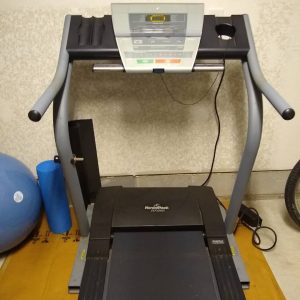Dreaded IT Band pain!
Runners stretch it, roll it and ice gun it but sometimes those muscle fibers just get grumpy. While it might be a bother, it is also preventable and treatable. A frequently experienced injury, many runners don’t know what the IT Band does or how to deal with it. Here’s a little bit more to help you understand what you’re facing with IT Band pain.
The illiotibial band (ITB) is a large fibrous group of fascia that runs longitudinally down the outside of the upper leg. Anchoring at the iliac crest and tibia, it’s a bunch of passive rubber bands that extend, abduct and rotate the hip laterally. It also helps stabilize the knee while storing energy to support running and walking.
IT Band syndrome (ITBS) is an inflammation of these tissues and typically presents with outer knee pain. That is the area where the ITB should slide over bone and muscle easily. If it’s not sliding due to inflammation or tightness, pain will result. Sometimes the pain can be felt along the entire length of the outer thigh and it’s often a result of overuse. Two examples of exercise patterns that can lead to overuse are increasing mileage too quickly or running on hard surfaces.
There is good news, however. There are several ways to treat and prevent ITBS. The first step in treatment is to rest long enough for the inflammation to subside. Second is to work on improving mobility of the hip and knee. Limited range of motion in either joint can cause extra stress to the ITB and lead to inflammation. Foam rolling and proper warm up to increase circulation to these fibers before a workout will help it slide painlessly.
Strength training with a qualified coach is one of the best solutions to ITBS. Having muscles strong enough the support your increase in mileage or the strain of a downhill marathon will help prevent ITB irritation. Hip, glute and abdonimal core strength are paramount to any solid strength training plan for runners who want to stay healthy. These muscles also ensure your IT band gets the support it needs.
A final possibility is that it might not be it your IT Band at all. The ITB is so passive it’s hard to know how it might get injured. Since that research isn’t ready yet take a look at the muscles around it: your hamstrings and quads. When these muscles get tight or damaged they can put stress on the IT band. Relaxing the tight muscles through improved mobility or foam rolling can release stress on the ITB to reduce or eliminate pain.
Want to stay ITBS free? Take good care of all the muscles it works with. Be sure to strengthen, stretch and warm up properly.
Coach Meredith

